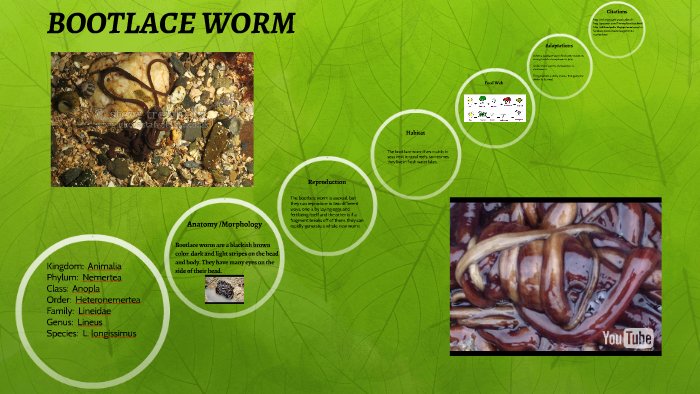
You might be wondering just how long these unique worms live in their natural habitats. Their lifespan can be surprisingly lengthy, depending on various factors like their environment and life cycle. So, let’s dive into the world of bootlace worms, exploring what influences their lifespan and offering a peek at their behaviors along the way.
Understanding the Bootlace Worm
Bootlace worms belong to the *Lineus* genus and are primarily found in coastal regions and shallow waters. These worms can be tricky because they have an almost transparent appearance, which allows them to blend seamlessly into their surroundings. You could say they’re the ninjas of the aquatic world!
Their long, slender bodies are covered in a layer of mucus, which helps them glide through the water. This adaptability is crucial, especially when it comes to hunting and avoiding predators. Bootlace worms are known for being predatory, feasting on smaller marine animals like crustaceans.
You might find it interesting that they have a unique method of reproduction. Rather than laying eggs like many other worms, bootlace worms can regenerate from fragments of their bodies. So, if a worm gets cut in half, it doesn’t just die; it can potentially grow into two new worms. This regenerative ability is a key factor in their survival and lifespan.
Lifespan of Bootlace Worms
So, how long can bootlace worms live? In their natural habitats, they have been known to live for several years, with some estimates suggesting they can survive up to **10 years or more**. The actual lifespan can vary significantly based on environmental conditions and predation risks.
In optimal environments—such as clean water with abundant food—bootlace worms thrive and reach their full lifespan potential. However, in polluted waters or areas with fewer food sources, their lifespan might be significantly shorter. It’s all about survival of the fittest!
Here’s the thing: understanding their lifespan helps scientists gauge the health of marine ecosystems. If bootlace worms are living long and healthy lives, it indicates a healthy habitat. On the flip side, if their numbers dwindle, that’s a red flag for environmental issues.
Factors Influencing Lifespan
Several factors impact the lifespan of bootlace worms. Let’s break these down:
- Environment: Clean, well-oxygenated waters are essential for their survival. Pollution and habitat destruction can lead to shorter lifespans.
- Availability of Food: These worms thrive on smaller marine organisms. If food is scarce, their health—and consequently, their lifespan—can be affected.
- Predation: Bootlace worms have few natural enemies, but larger fish or marine mammals can pose threats. Increased predation can lead to a decrease in their population and lifespan.
- Regeneration Ability: Since they can regenerate, it gives them a kind of resilience that can enhance their overall survival chances.
Each of these factors plays a crucial role in determining how long bootlace worms can live in the wild.
Bootlace Worm Habitats
Bootlace worms typically thrive in a range of marine environments, from sandy coastlines to rocky shores. They often prefer shallow waters where they can easily find food and shelter. Think of it like choosing a cozy spot to set up a tent; they look for places that offer safety and resources.
You might find them hiding among rocks or buried in the sand, which allows them to avoid predators. These environments also provide the nutrients and food sources needed for sustained growth. When conditions are just right, bootlace worms flourish, contributing to the marine ecosystem’s balance.
Interestingly, their ability to tolerate different environmental conditions adds to their adaptability. While they thrive in ideal habitats, they can survive in less-than-perfect ones—although this usually means a shorter lifespan.
Life Cycle of Bootlace Worms
The life cycle of bootlace worms is as unique as they are. They begin life as tiny larvae drifting in the water, seeking a suitable place to settle down. Once they find a spot, they transition into their adult forms, growing steadily over the years.
During their life, they can reproduce multiple times, contributing to the population. Remember that regenerating ability? It plays a vital role when it comes to reproduction. A bootlace worm can split and grow into two separate individuals, which increases their numbers dramatically.
This process also showcases their resilience. While other creatures might take years to recover from injuries, bootlace worms have a remarkable edge. Their ability to regenerate not only bolsters their numbers but also allows them to maintain a relatively stable population in their habitats.
Bootlace Worms and Ecosystem Health
Bootlace worms are vital players in their ecosystems. Their role as predators helps control the populations of smaller marine creatures, ensuring a balanced food web. If their populations hit a decline, it can lead to overpopulation of prey species, which might disrupt the entire ecosystem.
Healthy bootlace worm populations also indicate a well-functioning environment. When scientists study these worms, they’re getting a snapshot of the overall health of the marine habitats. In other words, by monitoring bootlace worms, we can learn about potential environmental changes and threats.
You could think of them as the “canaries in the coal mine” for marine ecosystems. By understanding their lifespan and health trends, we can gain insights into the larger environmental picture.
Bootlace worms are more than just a unique ocean creature; they are indicators of ecological health and resilience. With lifespans that can stretch over a decade, these worms adapt well to their environments, showcasing remarkable survival skills.
By understanding their lifespan and the factors that influence it, we can appreciate their role in marine ecosystems even more. So, the next time you hear about bootlace worms, remember they’re not just long and squirmy. They’re vital to the health of our oceans. Their fascinating life cycle and adaptability remind us of the delicate balance present in nature. Let’s celebrate these incredible creatures and work towards ensuring their habitats remain healthy and vibrant!
